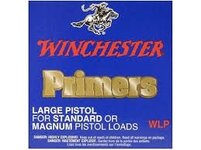Looking at loading data for .30 Carbine.....One book uses CCI primers, for some of the listed powders they use "Small rifle Magnum". Another book uses Remington small rifle primers(6 1/2 I believe), in loads from both books using the same powder. Remington does not have magnum primers. Am I to believe that Remington primers are hotter/have more "POP", than CCI primers of the same size?
I do understand that the loading data is only telling you what THEY used to get the results THEY got. Actual experience would help here. I'm still way off from shooting my own loads as I don't get out much. Too cold and wet and all that.
I do understand that the loading data is only telling you what THEY used to get the results THEY got. Actual experience would help here. I'm still way off from shooting my own loads as I don't get out much. Too cold and wet and all that.







 It's possible I suppose that less powder need a bigger fire to burn properly? In any case I will probably follow the Lyman data, I think.
It's possible I suppose that less powder need a bigger fire to burn properly? In any case I will probably follow the Lyman data, I think.




